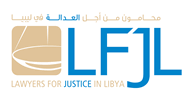Why Did LFJL create this Toolkit?
Until 2011, media freedom in Libya was severely limited. Media organisations were subject to a high degree of state censorship and control, and journalists faced exile, imprisonment or attacks for critical reporting. The 2011 uprising saw numerous media outlets launch across the country as citizen journalism and the spread of information on social media flourished. However, many were forced to close over the next couple of years due to a lack of funding and the worsening security situation.
Since then, journalists in Libya have been subjected to bureaucratic interference and reporting restrictions, harassment and attacks, prompting many to flee the country. Between January and November 2019, the Libyan Centre for Freedom of the Press (LCFP) documented 54 attacks against journalists including kidnapping, arbitrary arrest, detention and torture. As of 11 November 2020, the Committee to Protect Journalists has documented the deaths of 14 journalists and media workers in Libya since 2011.
The curtailing of media freedom has been accompanied by a rise in partisanship, polarisation and the spread of disinformation across a wide range of media platforms, which have become tools used by all sides to influence the course of the conflict. Libya’s highly fragmented media space is often seen as another “frontier of the war,” a battleground to “win people’s hearts and minds.” For example, many armed groups have their own Facebook pages to spread propaganda and to monitor the behaviour of those who may not align with their point of view, which can then translate into online and offline violence.
This polarisation has been accompanied by the rise of disinformation and hate speech. In one study, the LCFP monitored professional breaches of journalistic standards across the 15 Libyan media outlets most relied upon by the Libyan public according to opinion polls. From January to June 2020, the organisation recorded 23,362 incidents, of which hate speech accounted for 76.8% and fake news accounted for 23.2%. The media monitoring organisation Falso, established by LCFP, is publishing a series of reports on these breaches and maintains a live counter of breaches of journalistic standards in Libyan media outlets on its website
For all these reasons, journalists covering Libya over the past decade have faced mounting challenges to reporting accurately and comprehensively. As a result, international media coverage of Libya often focuses on macro-level political or security issues, while stories that centre the victims of violations of human rights or international humanitarian law are often overlooked.
To assist journalists in navigating the challenges involved in reporting on Libya today and encourage wider reporting on human rights, LFJL has created this media toolkit containing contextual information on key developments in Libya since 2011, the principal actors involved in the conflict and information on some of the key human rights violations taking place in the conflict today.
